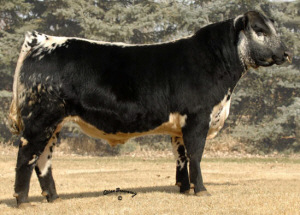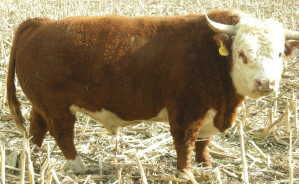



Simmental
History
Simmental is a breed of cattle whose history dates back to the Middle Ages. Early records indicate that Simmental cattle were the result of a cross between large German cattle and a smaller breed indigenous to Switzerland. The name Simmental is derived from the name of the area where the cattle were first bred - the Simme Valley which is situated in the Berner Oberland in Switzerland.
Technically, the Simmental designation includes several breeds in Europe.
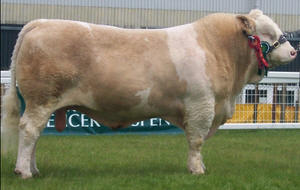 Photo courtesy of Drumsleed Simmentals, www.drumsleedsimmentals.co.uk |
Since its origin in Switzerland, the breed has spread to all six continents. Total numbers are estimated between 40 and 60 million Simmental cattle worldwide, with more than half in Europe. The worldwide spread was gradual until the late 1960's. Records show that a few animals were exported to Italy as early as the 1400's. During the 19th century, Simmental were distributed through most of Eastern Europe, the Balkans and Russia, ultimately reaching South Africa in 1895. Guatemala imported the first Simmental cattle into the Western Hemisphere in 1897, with Brazil following in 1918 and Argentina in 1922. In 1976 they were also shipped to the Republic of China.
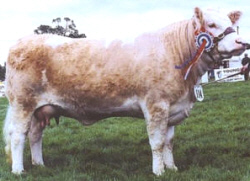 Photo courtesy of Drumsleed Simmentals, www.drumsleedsimmentals.co.uk |
To read about the Fleckvieh click here to go to dairy breeds
Characteristics
Simmental colour varies from gold to red with white, and may be evenly distributed or clearly defined in patches on a white background. The head is white and often a white band appears over the shoulders like the photos above. The majority have pigment around the eyes, helping to reduce eye problems which occur from bright sunlight.
American Simmentals are coloured differently being predominantly black or red like the example photos below, the lighter colours are referred to as Fleckvieh.
Simmental can be horned or polled, if horned horns are up turned, another distinguishing feature is that they have a heavy dewlap. They have a large frame with good muscling with cows at approximately 135-150cm tall and the bulls at 150-160cm. Their weight can vary on the use of their use but cows can weigh around 700-900kgs and bulls 1300kgs.
Generations of selective breeding, with the objective of maximizing milk and beef production at minimum cost, have created a balanced hereditary proponent that is highly adaptable, heavily muscled, fine lined, and well conformed. Docility and good mothering traits are other characteristics of the breed.
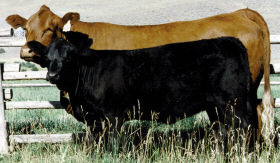 Photo courtesy of The American Simmental Association, www.simmental.org |
Simmentals are bred all over the world for their high beef yields. In breeding however it allows variations in emphasis from mothering ability to beefing qualities. The heavy muscling, length and overall size and weight of the animal are combined to produce a well fleshed carcass of solid red meat with a minimum of waste fat.
In crossbreeding, the Simmental has proved very successful. It provides good growth, a large frame and thus a better beef yield to its crossbred progeny. It improves the quality of the meat with white fat and excellent marbling. It improves the milk yield, resulting in strong development of the calves in suckler herds.
Statistics
- High, long term fertility
- Longevity
- Calving ease
- Short intervals between calving
- Excellent mothering ability
- Good grazing ability
- Early maturity
- Good growth rates
- Easy to handle
- Feed conversion and efficiency
- Uniformity in type & colour
Comparative
Body measurements of crossbred calves sired by Simmental bulls divergently selected for progeny first-calf calving ease in relation to birth weight - 1991, PDF format 930K
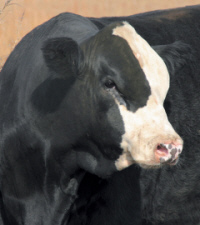 Photo courtesy of The American Simmental Association, www.simmental.org |
To read about the Fleckvieh click here to go to dairy breeds
Distribution
Simmentals are an adaptable breed and have been successfully introduced into all five continents. The breeds population of 41 million shows the ability of the breed to satisfy different breed programmes throughout the world. Simmental is the second largest breed in the world superceeded by the Brahman.
References (the above information was cited from the following sites)
www.simmental.com
www.simmental.org
www.drumsleedsimmentals.co.uk

